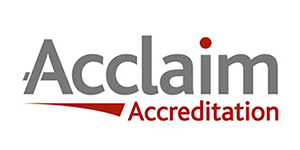
Effective Tips to Maintain Your Concrete Surface During Summers
Summers are the perfect time to indulge yourself in outdoor activities and implement the latest backyard ideas to modify your surroundings. Also, long days and warm temperature is the prime time to kick-start your outdoor projects, such as garden edging, and installing patios, porches, pathways, etc. Moreover, these areas, such as backyard gardens, patios and pools are the perfect space to enjoy vacations, and spend time with your family & loved ones. While longer daylight hours encourage outdoor projects to contact the concrete supplier to lay patio slabs, they also possess their own set of challenges.
As summer arrives with its scorching heat, it’s important to consider the impact of the high temperatures on the surroundings, including concrete slabs. Prolonged sun exposure can cause concrete to undergo thermal expansion, leading to cracks, discolouration, and other forms of damage. Are you thinking of creating a new concrete walkway in your landscape gardening or are you concerned about protecting your current pathways from potential damage? Read on to explore some practical tips to beat the heat and maintain your concrete surfaces all summer long.
How Scorching Sunny Days Effects Concrete Surface?
When a cementitious material is mixed with water, intricate chemical reactions take place to set and harden the concrete mixture. While adequate heat is necessary for chemical reactions, high heat increases the evaporation of moisture from the concrete and reduces the setting time. As a result, the concrete structure takes no time to harden and lose its strength, leading to a dry and cracked surface.
Concrete Pouring Strategies During Summers
In this section, we will go through some methods that reliable concrete supplier companies use to ensure good-quality concrete pouring and curing.
Early Starting the Workday
You can expect your concrete contractors to visit early on the construction site and start pouring concrete in the needed area. The reason is that early morning is the best time for pouring and gives the concrete mixture enough time to set up. Arriving early in the morning will also help the labourers to complete the job before the temperature goes quickly up to high levels.
Concrete Cooling Solutions
Your ready-mix concrete supplier company will follow some methods to keep the concrete mix cool and slow down the concrete hydration process.
- They will use Ice to prepare a concrete mixture with cool water
- Spray down the subgrade with the chilled water
- Add EVAPRE or evaporation retardant to slow down the setting process
Using Other Protective Coverings
Indeed, weather conditions can not be controlled, but you can always use protective elements to reduce the impact of high heat on your concrete surface. To prevent damage due to high heat, your contractor may use temporary shading and wind-blocking structures. These sun shadings will help to manage heat and evaporation during concrete pouring and curing.
Use Sealant to Protect Surface
Even after the concrete structure gets hard, excessive heat can crack, break and expand the already set concrete mixture. To prevent potential damage, a sealant can be applied as a protective coating to repel evaporation, intact moisture and prevent thermal expansion.
How to Protect Existing Concrete Surfaces All Summer Long?
Outdoor concrete surfaces, such as driveways, sidewalks, and patios absorb scorching heat on sunny days and get extremely hot. At last, the surface gets damaged due to excessive heat. To ensure the longevity and aesthetics of your backyards, it’s necessary to implement effective maintenance tips during the summer months. So, let’s get you through the concrete surface maintenance tips.
Clean Concrete Areas Annually
Maintaining clean concrete surfaces is essential, as it prevents the accumulation of dirt and dust that can potentially stain or damage the concrete. During summer, it’s important to clean your concrete more frequently due to exposure to outdoor activities. Simply sweep or use a mild detergent & water solution to scrub away any stains. Moreover, rinse the surface with a hose and consider using a power washer for bigger areas. Make sure your pressure washer is on its lowest settings so that the pressure does not accidentally chip away the top layer. Remember to avoid using harsh chemicals that could degrade the concrete’s surface.
Regular Inspections and Prompt Repair
Inspect your concrete surfaces on a regular basis and notice the signs of damage, such as cracks, chipping, or discolouration. Noticing the damage early enables timely repairs, which prevents further deterioration. Simply contact your concrete supplier company or a professional concrete contractor. Let a qualified expert figure out the degree of damage and provide appropriate repair solutions. Taking prompt maintenance action will not only extend your concrete surface life but also save you from costly repairs down the line.
Add Fresh Sealant Coating
Sealant coating is not a one-and-done process that remains in its original condition without maintenance. You have to reapply your sealant protection layer every three to five years depending on the conditions of the top layer and the weather. The need to have a fresh coating of waterproof sealant also depends on the areas where your concrete surface is located. For example, if it is a driveway from your backyard garage, withstanding lots of vehicle traffic which is also exposed to direct sunlight, you need frequent sealant coating. On the other hand, if it is a shaded sidewalk in your backyard, you can go longer for your sealant reapplication procedure.
Remove Stains Before it Gets Absorbed
Sidewalks and driveways are the areas most likely to get stained due to grease, oil and other chemicals from vehicles and tools & equipment. Moreover, direct sunlight and excessive heat set the stain and can make them a part of your concrete pathways. That’s why it’s important to remove the stains immediately before they get absorbed into the concrete. You can use concrete-appropriate stain-removing products and scrub out the stained areas as soon as stains occur on your floors. Make sure to follow the guidelines provided by the product manufacturer while cleaning the stains.
Conclusion
While concrete slabs are known to withstand heavy traffic, they also require a little bit of maintenance from damaging factors, especially from direct sunlight. Extreme temperatures can lead to faded surfaces and cracks in your concrete slabs. With effective maintenance, such as regular cleaning, installing sun shades, and conducting regular inspections, you can significantly extend the lifespan and maintain its original aesthetics. After all, timely maintenance from a reliable concrete supplier company is key to preserving the integrity of your concrete. Moreover, preventive measures ensure the durability and beauty of your concrete surface for years to come.





















